Text: Irene Daum | Section: Articles about Artists
Summary: In his colourful paintings, the German-Japanese painter Ryo Kato addresses the destruction of nature by humans. His work draws on the cultural heritage of his Japanese origins as well as on the influences of his current place of work, the multicultural metropolis of Berlin. According to the artist, there are clear analogies between art and mathematics. His work reflects his long-standing dedication to numbers, abstract structures and the geometry of surfaces and space which are critical features of the board game Go.
Born in Japan in 1978, the painter Ryo Kato has lived and worked in Berlin for more than 15 years. His work addresses a wide range of topics on the complex relationship between man and nature. Using a unique seemingly bold visual language, he tells stories and creates dark apocalyptic scenarios denouncing the destruction of nature by man. This motivation of his work is also reflected in the choice of the titles of his paintings. Examples are The Evil Deep in Man, The Fourth World War or Fighting Monsters.
Ryo Katos work is an urgent appeal for a change in our ways of thinking and for a more sensible use of the limited resources of our planet. His colourful paintings are characterized by expressive powerful motifs, an abundance of detail and multiple layers and references. Figurative elements such as animals or objects serve as eye-catchers. They represent the familiar which mixes with the unknown, the abstract elements, drawing the viewer into his dark mysterious world. His paintings reflect the influence of his teacher Daniel Richter including Richters conviction that a picture needs to be “socialized”, i.e. seen through the eyes and the mind of the viewer by the painter. Following his role model Albert Oehlen, Ryo Kato addresses conflicts between nature and culture and bases his work on the interplay between figuration and abstraction. The strong effect of Jörg Immendorffs oeuvre emerges in allusions to everyday life, political and global events and their reflection and expression in art. Ryo Kato shares Immendorffs conviction that an artist bears a special responsibility for society and therefore needs to adopt firm positions on important political issues.
Ryo Kato`s work has been strongly influenced by his personal past which continues to affect his career to a significant degree. The combined influences of his upbringing and early education in Japan and training as an artist in the multicultural metropolis Berlin have been of critical importance. His work reflects the interplay of experiences which stem from a traditional environment in early years and the experience of freedom in artistic expression which shaped his student and professional years. Ryo Kato feels a special bond with nature typical for his native Japan. The strong awareness of issues relating to man and environment is linked to the experience of disasters – atomic bombing, natural disasters and economical crises – which have hit his native country in the last decades more frequently than other regions.
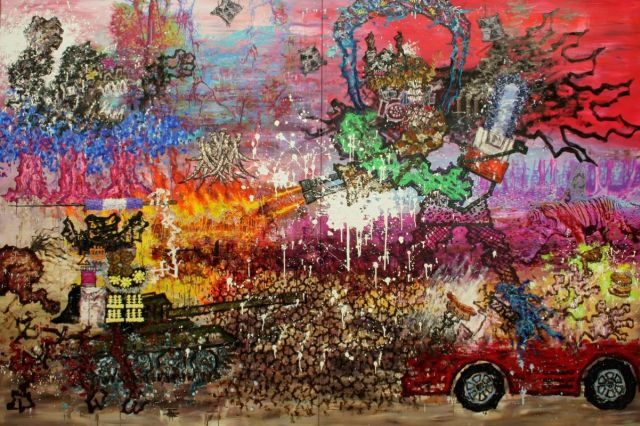
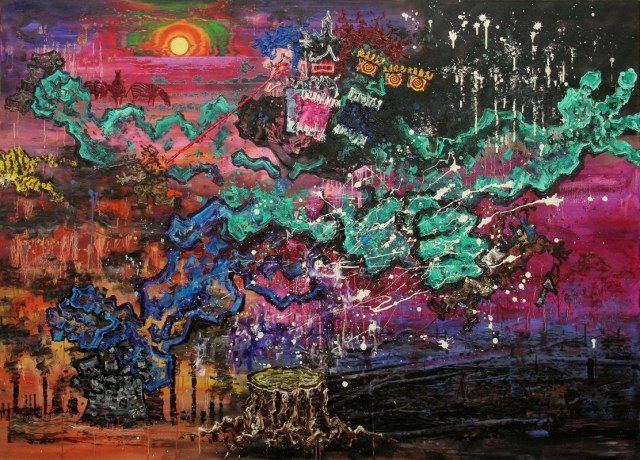
Ryo Kato is a wanderer between the worlds of free art and strict scientific thinking. As a child he showed an exceptional talent for mathematics. At the age of 8, he started training with a Go Master which he pursued for several years, aiming at a professional career as a Go player. He was captivated by numbers and abstract structures and the examination of their properties and patterns using logical operations. He did not only engage in numbers on an abstract level, but he also dedicated himself to the exploration and understanding of spatial relations, the geometry of surfaces and spaces, fascinated by rigorous scientific methods. Clear structures also form the basis of his work as a painter. He plays with numbers and their combination in arithmetic and their function in representing proportions. According to Ryo Kato, there is a clear analogy between mathematics and art in the sense that the combination of single elements yields a result which has the quality of something novel.
The board game Go is one of the oldest strategy games. The game makes exceptionally high demands on logical strategic thinking and visuospatial imagery. Using black and white playing pieces, two opponents take turns to mark positions on the board, aiming to create clever spatial patterns. The player who eventually dominates a larger total area on the board wins the game. At any stage during the course of the game, the player has to keep track of both the overall status and the positions of local spatial patterns in order to dominate the game. For the artist and Go player Ryo Kato, the canvas is similar to the board. Initially there are a number of independent single elements and spatial subregions which interact during the course of the painting process to form a unique superordinate visuospatial pattern.
The complexity of Go and its affinity to algorithms is exceptionally high. The number of possible moves is several orders of magnitude higher compared to chess. While computer programmes have been superior to chess grandmasters for several years, a software was able to beat a leading international Go player only a year ago. According to experts, this outcome represents a milestone in the development of self-learning machines.
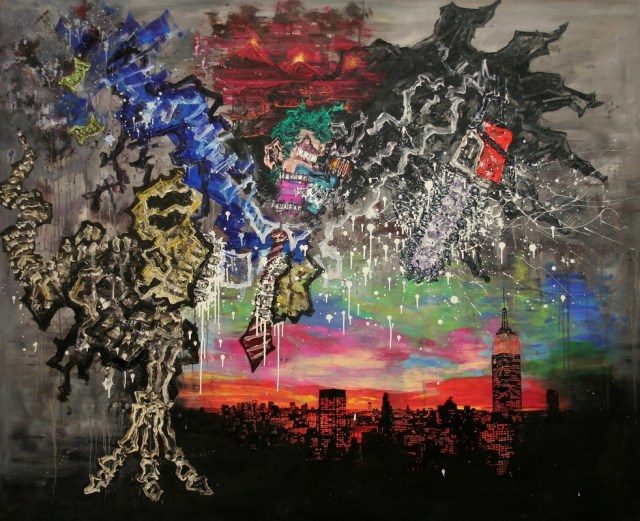
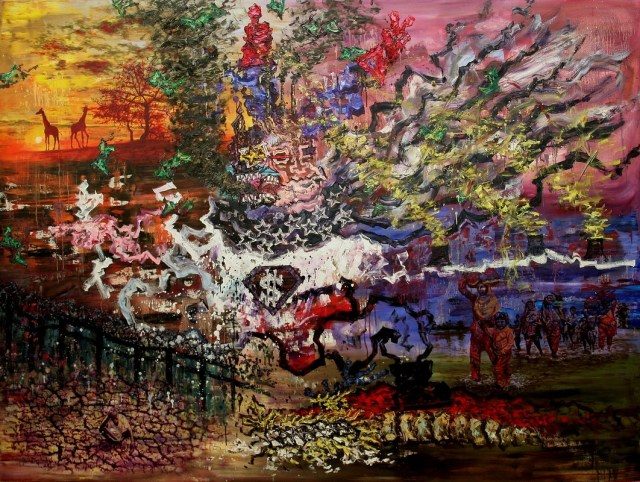
Ryo Kato feels strongly about the relationship between man and environment and he incorporates his emotions into the design and the structure of his paintings. The implementation of an idea for a picture is based on both intuition and scientific thinking and planning, yielding extraordinary results. The growing international recognition of his work is not only reflected in numerous exhibitions and contributions to art fairs. Ryo Kato has also been awarded important art prizes, among them are awards by the Darmstädter Sezession and the Okayama Prefectural Museum, Japan.
His current exhibition Ryo Kato – An Endless Story is shown by the Bengelsträter Gallery in Düsseldorf until May 8th, 2017. The Deutsche Umwelthilfe e.V. in Berlin exhibits his pictures on the subject of Endangered Environment from March, 29th 2017 to April 2nd, 2018.

Photo above text: Irene Daum (2016).
How to cite this article
Irene Daum (2018): Ryo Kato – Wanderer between Worlds. w/k–Between Science & Art Journal. https://doi.org/10.55597/e2877
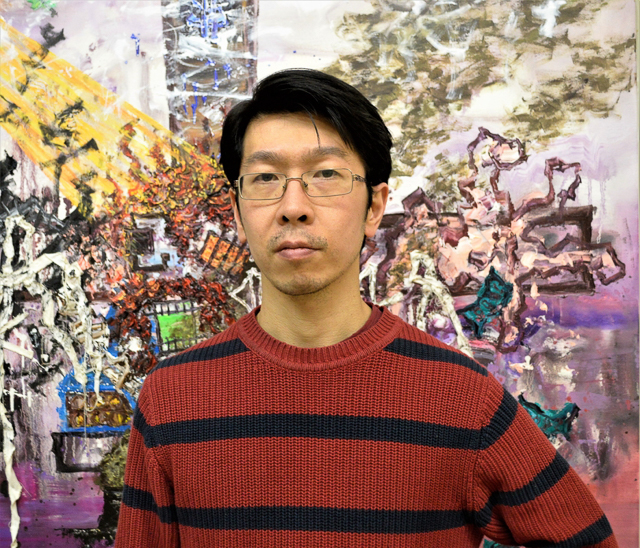

Be First to Comment